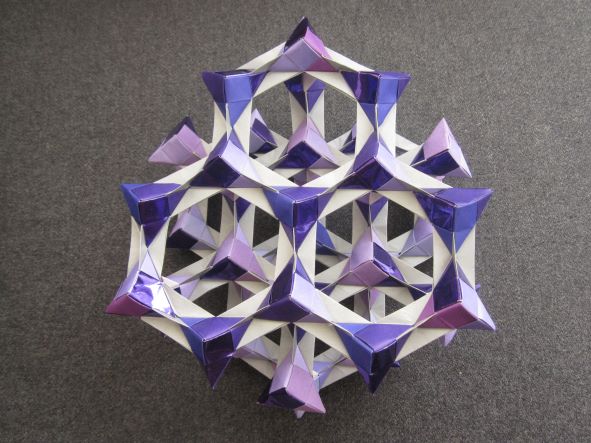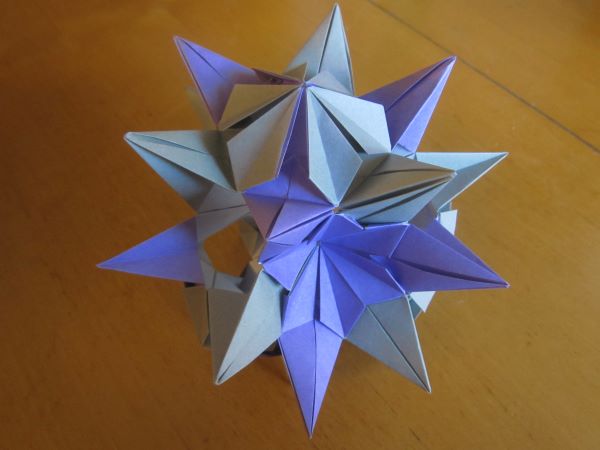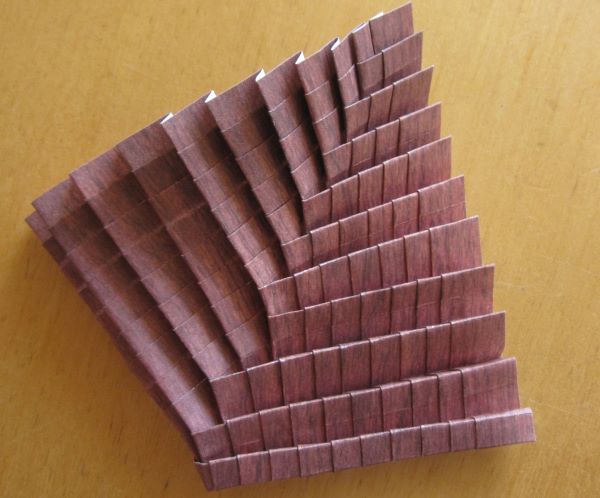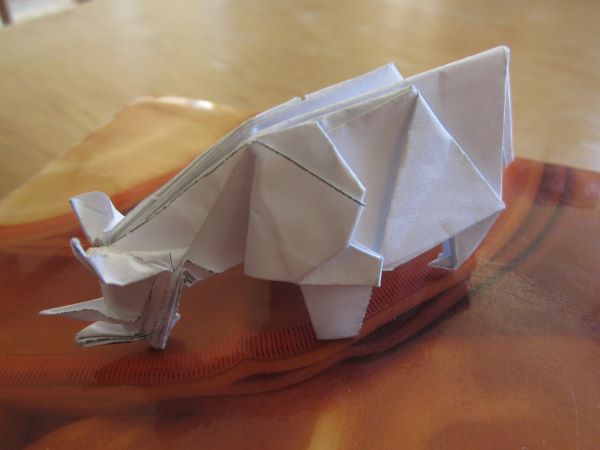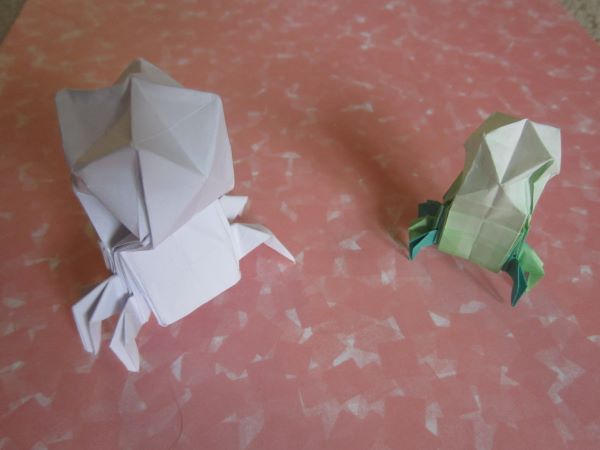
Bacteriophage, designed (and taught) by Miguel Romero
Last month I went to the local origami convention, and this is one of the models that I learned. Later I folded a second one.
This origami uses a technique called box pleating. Box pleating typically starts by folding the paper into an NxN grid of squares. You then collapse into a base that has the right number of “points”. In this case, there are 6 points for the 6 legs, 2 points are internally hidden, and the head is the 9th point.
This model is simple as far as box pleating goes, but it’s still quite difficult to teach in a convention setting! When you’re familiar with box pleating, you don’t necessarily have explicit steps in your head, you just do it. But most people in the workshop won’t have experience with box pleating, and so the teacher needs to come up with step by step instructions. Even people who are familiar with box pleating may not fold very quickly. So when I say this model is simple, that’s to its benefit. Simplicity is a virtue in origami, especially origami that you teach to others.

